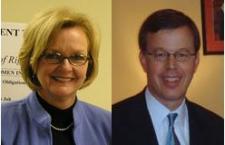Stem Cell Research in the Midterm Elections

This statement can be attributed to Dr. Marcy Darnovsky of the Center for Genetics and Society:
Stem cell research was again a contentious and high-profile topic in this year’s elections, but in most races its effectiveness – as a wedge issue for Democrats or a get-out-the-base issue for Republicans – remains unclear.
In Missouri, Amendment 2 made stem cell research a top tier issue. Backers spent a record-shattering $30 million for a 2% margin of victory on a measure that did little more than enshrine the status-quo stem cell research policy.
Both Missouri Senate candidates treated it gingerly during the campaign. The morning after Election Day, victorious Democrat Clair McCaskill said that “it certainly wasn't the dominating issue that the national media made it after the Michael J. Fox ad.”
Unfortunately, the stem cell debate was colored by the overheated and distorting rhetoric that has been heard so often before. Voters were bombarded with misleading political ads and hyperbolic language, and many no doubt walked away from the campaign debate more confused than ever.
The over-simplification and polarization of stem cell politics does a deep disservice to American voters, and threatens to leave the field without the sort of public oversight it needs. As the 2007-2008 campaign season gets underway, we need an approach that couples support for embryonic stem cell research with responsible policies to ensure that it is developed in ways that are safe, equitable and affordable.
Background information
The Center for Genetics and Society has compiled information and analysis about the prominence and impact of stem cell research as a campaign issue in 30 Senate, House, and gubernatorial races where it was expected to play a significant role. In most of those 30 contests, a Democratic candidate supporting embryonic stem cell research ran against a Republican candidate who opposes it.
We highlight 8 of these races: 4 in which stem cell research wound up playing a significant role, as measured by its profile on the candidates’ web pages and by local media coverage, and another 4 in which expectations that the issue would be prominent turned out to be inaccurate.
2006 election analysis:
http://www.genetics-and-society.org/resources/cgs/20061108_races_press.pdf
Polls conducted over recent years show strong support for stem cell research using surplus embryos created for fertility treatment (typically more than 60%), wariness about stem cell research using cloning (SCNT) techniques, and support for effective regulation and oversight.
Analysis of polling on stem cell and SCNT research:
http://www.genetics-and-society.org/resources/cgs/20061108_polls_press.pdf
Contact:
Marcy Darnovsky
510-625-0819 x305
Parita Shah
510-625-0819 x312



